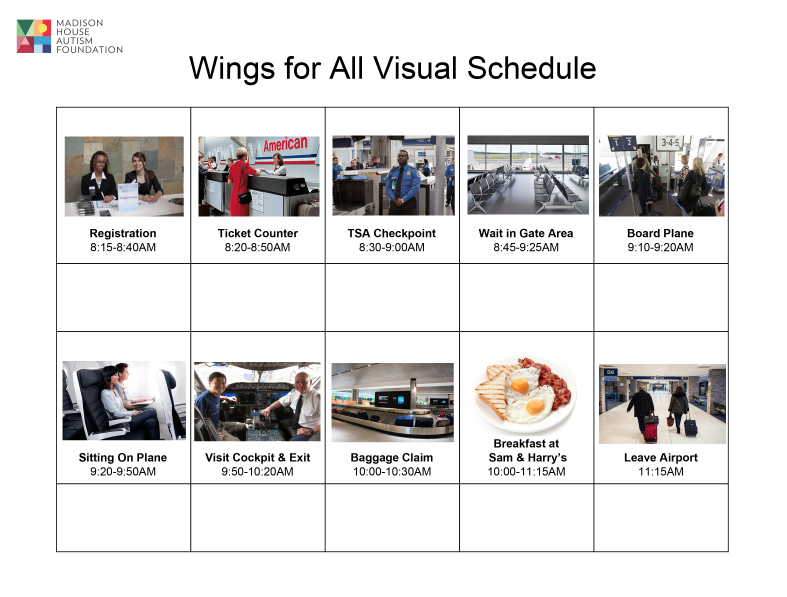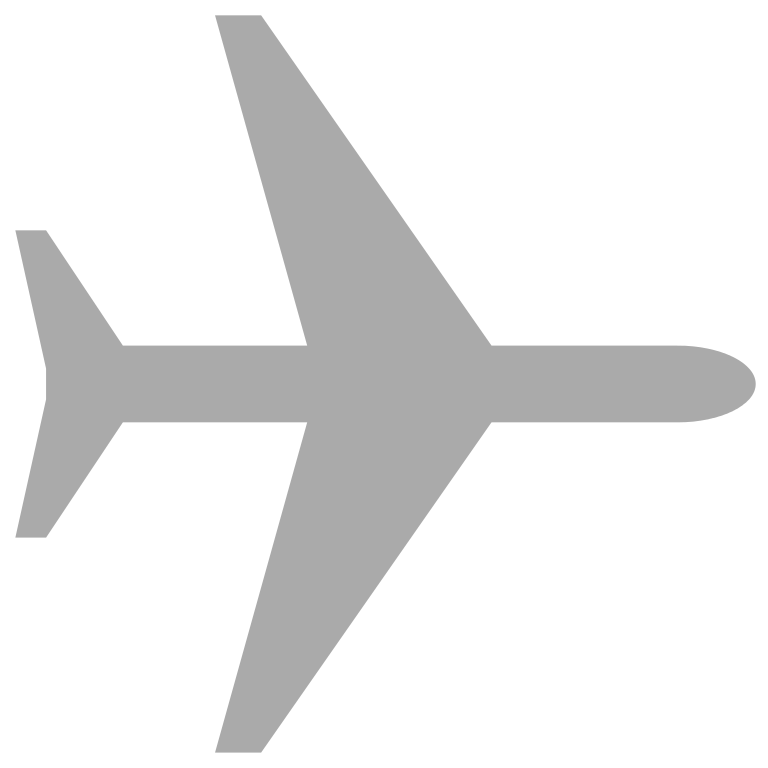On Saturday, November 5th, Madison House Autism Foundation partnered with American Airlines and The Arc of Northern Virginia to hold a “Wings for All” event at Reagan National Airport. The goal of the event was to provide a realistic travel experience for individuals with special needs and their families to learn more about air travel and ease the stress of flying. Attendees received a realistic practice run of the airport experience (sans the actual flight), which included entering the airport, navigating the terminal, getting boarding passes at the ticket counter, checking bags, passing through the TSA security screening, and boarding an aircraft at a gate. This event was a remarkable success, and we plan to arrange more of travel opportunities in the future. We’d like to thank Reagan National Airport, the Metropolitan Washington Airports Authority, TSA, Traveler’s Aid, and Sam & Harry’s for helping to make this experience possible.
We are delighted that WUSA9 was on the scene to cover this fun and educational event. Watch the feature below, and continue reading for useful travel tips for individuals with special needs and their families.
Air Travel Tips for People with Autism and Other Disabilities
- Plan ahead as much as possible. About 72 hours before your flight, call the TSA Cares hotline at (855) 787-2227 and explain what supports you may need. Use IFly to find useful information about the airports you’ll be in. Review your airline’s policies online, and consider printing out the relevant pages or a notification card. Review your rights under the Nondiscrimination on the Basis of Disability in Air Travel regulations.
- Even if you don’t have much notice, get in touch with the airline as soon as you can. Tell the airline what accommodations you need, preferably when you book. Ask for a TSA Passenger Support Specialist as soon as you reach the security line. You can (and should!) do this even if you didn’t have time to call TSA Cares. Airlines like advance notice, but, unless you have a large group or require oxygen, most of them don’t require more than an hour to provide accommodations like advance boarding and guaranteed seating. Ask the ticketing or gate agents what accommodations are available to you. You deserve to understand all of your options!
- Notify everyone of the accommodations you need. Even if you called ahead, find a gate agent and tell them you need advance boarding or guaranteed seating together as soon as you reach your gate. Tell the flight attendant about any accommodations you need while on the plane. If you need help getting to a connecting flight, tell the attendant that too. He or she can help make sure the right employee is there when you get off the plane or direct you to the next gate agent who will take care of it.
- Have at least one printed copy of your entire itinerary and any help you need. Various airline and airport employees will have an easier time helping you find your way through the airport or getting you to the right people if you have a printed copy of your itinerary to show them.
- Become familiar with the airport and parking situation before your trip. This could alleviate the stress of getting lost or confused later on.
- Dress to go through TSA. Wear clothes that are comfortable and easy to go through security (e.g. shoes that slip on and off as opposed to boots that need to be laced, pants with elastic waists that don’t require belts, no jewelry, etc.)
- Consider booking a short practice flight. In some circumstances, individuals and parents have reported success in taking short practice flights to nearby cities. While this is not an option for all, it is a low-risk way to gauge an individuals tolerance of riding in an aircraft. The rental cars available at the airport provide the option of driving home if flying back proves too stressful.
- Rehearse the day. Many parents and caregivers have found rehearsing the process of flying to be extremely helpful. If you find a Wings for All or Wings for Autism program in your area, consider participating one or more times. If you don’t have the opportunity to participate in a large program, try rehearsing activities such as removing your shoes and going through security, boarding the plane, or deplaning at home. You can also read books, watch videos of different parts of the travel process, and visit airports to watch planes take off and land. For Saturday’s Wings for All event, we created a visual schedule (pictured below), which was helpful for many attendees.



 AUTHOR AND EDITOR
AUTHOR AND EDITOR Autism Gurus | Ron Sandison Inspires Hope in Faith Communities
Autism Gurus | Ron Sandison Inspires Hope in Faith Communities


